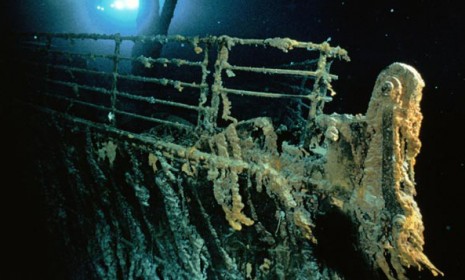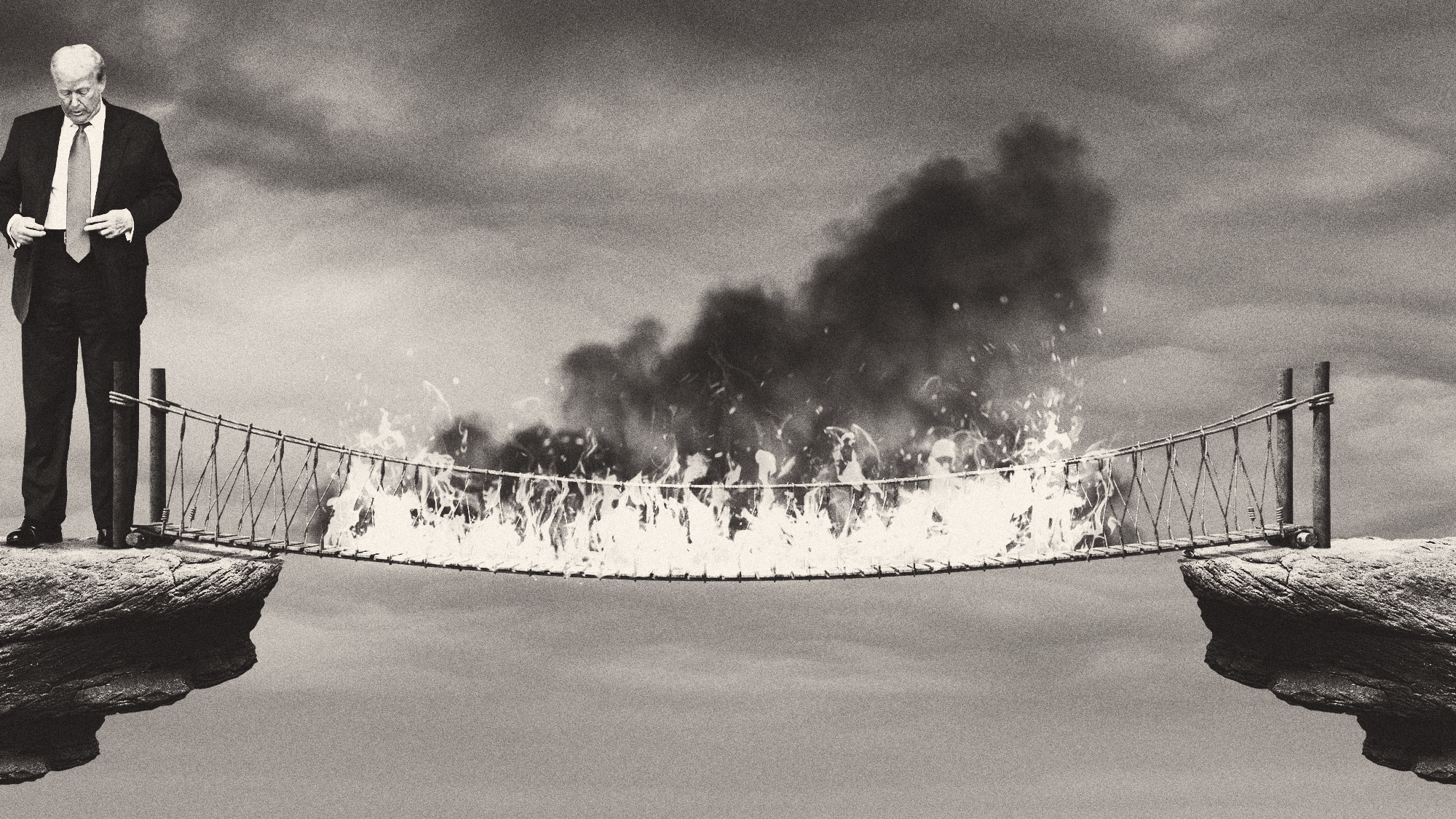Are there human remains at the Titanic wreck site?
About 1,500 people died when the Titanic sank 100 years ago. Most of the bodies were never recovered, but some say there are remains near the ship

When the RMS Titanic sank 100 years ago, about 1,500 passengers and crew went down with it. Some 340 of these victims were found floating in their life jackets in the days following the shipwreck. But what happened to the other 1,160 is still a mystery. Newly released photos suggest that at least some of the unlucky travelers' remains are mixed in with the wreckage of the ship. The question is controversial — after 33 trips to the ship, "I've seen zero human remains," a "visibly miffed" Titanic director James Cameron tells The New York Times — and a lot may ride on the answer. Here's a look at the dispute:
What could have happened to the bodies?
Some Titanic experts say a powerful storm the night of the wreck scattered the life-jacketed passengers in a 50-mile-wide area, so it's likely the bodies scattered across the seafloor. Other experts say hundreds of people were trapped inside the ship when it sank. The state of those bodies would depend on how exposed to currents of oxygenated water — and the deep-sea scavengers that thrive on it — they were over the years. "Decomposition slows if bodies get cut off from the open sea, reducing oxygen levels and scavengers," says William J. Broad in The New York Times. "The interiors of old wrecks have thus yielded bones, teeth, and sometimes whole bodies." As Titanic expert Robert Ballard tells the Times: "I would not be surprised if highly preserved bodies were found in the engine room. That was deep inside the ship."
The Week
Escape your echo chamber. Get the facts behind the news, plus analysis from multiple perspectives.

Sign up for The Week's Free Newsletters
From our morning news briefing to a weekly Good News Newsletter, get the best of The Week delivered directly to your inbox.
From our morning news briefing to a weekly Good News Newsletter, get the best of The Week delivered directly to your inbox.
What do the new photos show?
The most discussed photo captures leather boots and what appears to be a coat buried in the mud near the Titanic's stern. (Deep-sea scavengers are less interested in devouring leather than bodies.) The way the boots are laid out, says James Delgado, the director of maritime heritage at the National Oceanic and Atmospheric Administration (NOAA), strongly suggests that they landed there while still on the feet and back of a person. "This is clearly where someone came to rest on the bottom," Delgado tells The New York Times. "[The photo] speaks powerfully to this being a grave site."
Why is the photo just surfacing now?
A cropped version of the photo actually appeared in a book by Ballard, the explorer who discovered the Titanic in 1985 and who worked with the NOAA on the 2004 expedition during which the images were captured. This is the first time the NOAA has released the uncropped version to the public and it did so just days after Sen. John Kerry (D-Mass.) introduced a bill that would give the Commerce Department more power to protect the site from artifact hunters and intrusive expeditions, which have been taking place since 1987. If the site is essentially declared an undersea cemetery, that would bolster the government's argument.
A free daily email with the biggest news stories of the day – and the best features from TheWeek.com
What do skeptics say?
Those who have spent the most time exploring the wreckage insist that any bodies at the site have long since decomposed, arguing against the graveyard designation. "We've seen clothing," Cameron tells The Times. "We've seen shoes. We've seen pairs of shoes, which would strongly suggest there was a body there at one point. But we've never seen any human remains." Skeptics accuse NOAA, a branch of the Commerce Department, of exaggerating the photographic evidence as part of a power grab.
So are there bodies at the site?
We may never know if bodies or skeletons are trapped inside the ship. The question of whether shoes, as depicted in the photos, constitute evidence of human remains on the ocean floor probably comes down to semantics, says NOAA's Delgado. The bodies may be reduced to sediment in the boots and under the coat: "I, as an archaeologist, would say those are human remains," whereas explorers like Cameron might call them mud.
Sources: Associated Press, Gawker, New York Times
-
 Netflix and Warner Bros: a Hollywood ending for streaming giant?
Netflix and Warner Bros: a Hollywood ending for streaming giant?Talking Point The deal, symptomatic of Silicon Valley’s ‘grasp’ on entertainment, could entirely ‘reshape’ the industry
-
 Did Trump just end the US-Europe alliance?
Did Trump just end the US-Europe alliance?Today's Big Question New US national security policy drops ‘grenade’ on Europe and should serve as ‘the mother of all wake-up calls’
-
 How the War Department became the Department of Defense – and back again
How the War Department became the Department of Defense – and back againIn Depth In 1947 President Harry Truman restructured the US military establishment, breaking with naming tradition